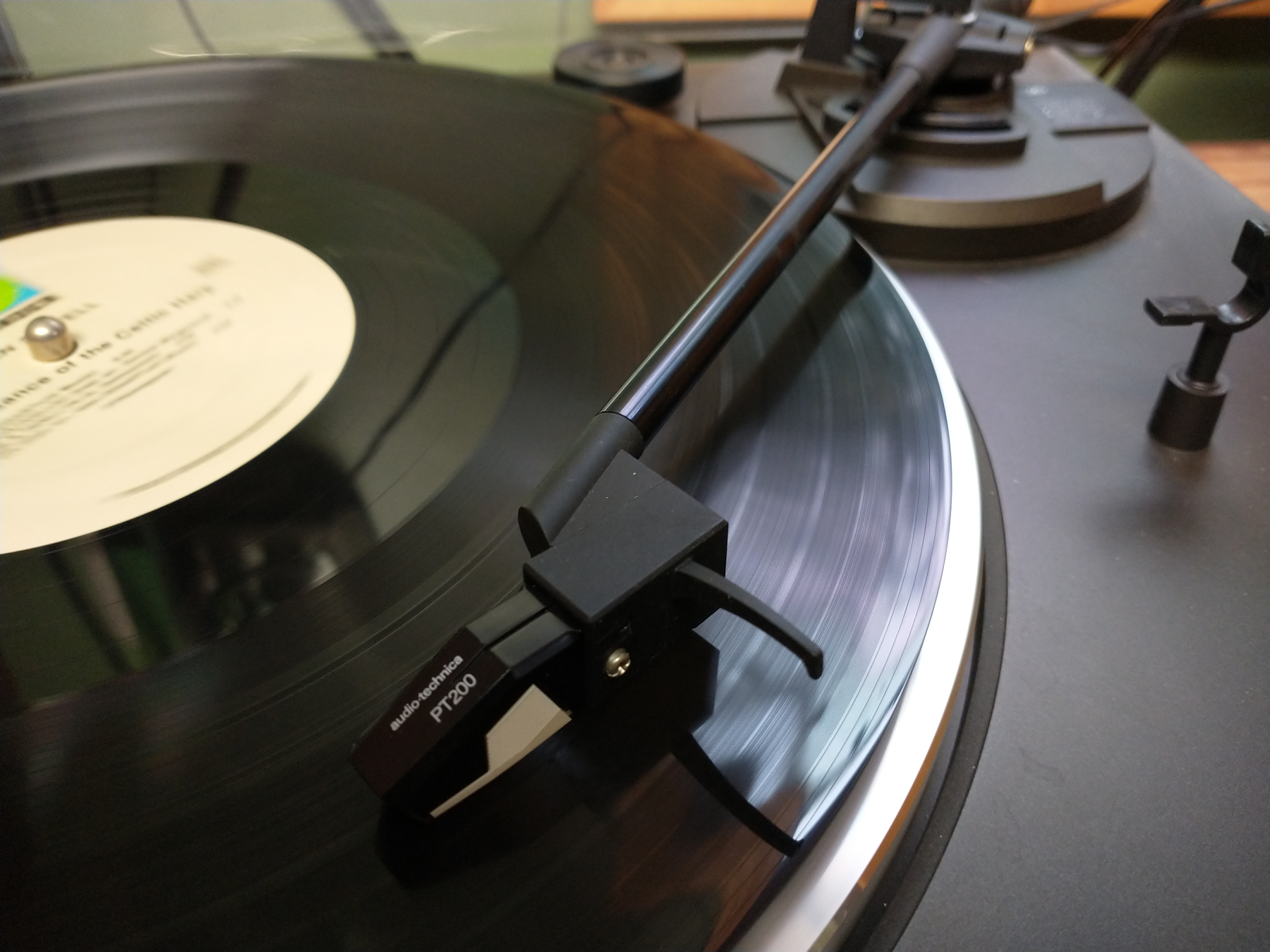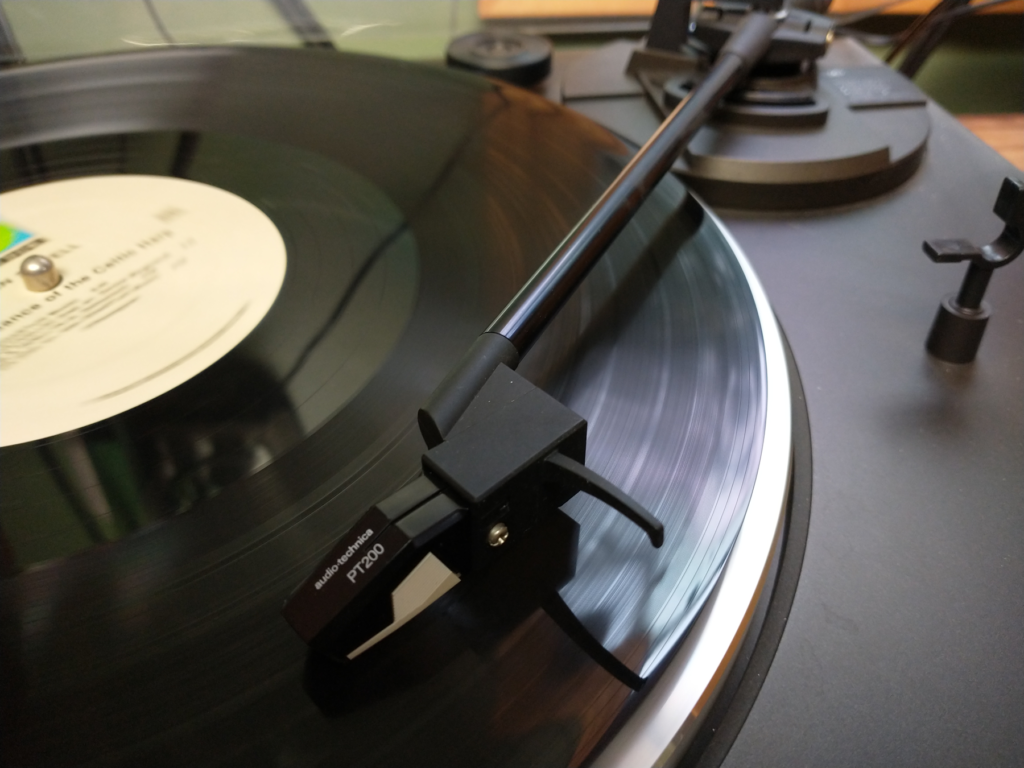The Backstory
Collecting LP records has been a “thing” for a long time. In the 1980s it was thought that the new fangled CDs would replace them, and for the most part Compact Discs did just that. Then digital files, such as MP3, replaced CDs, or just about. But downloading digital files has been over shadowed by streaming. What will come after streaming?
As with so many other things, such as old cars, clothes, and Hummel figurines, the LP record has been making a comeback. Those of us who are “of an age” are more than a little familiar with the eccentricities of vinyl records. Unfortunately, many newcomers to the format are not in the groove and that can be both frustrating and disappointing.
Here are a few things you should know if you are new to record collecting.
Some Basic Technical Stuff
It is easy to get overly technical and hideously complicated. Like any techy thing, it is easy to geek out. This is particularly true with turntables as the prices for new ones range from around $75 to well over $10,000. In the used product market there are some turntables that have acquired legendary status. Just ask an audiophile about the classic Technics SL1200 and you will have hours of not so entertaining conversation.
Let’s use the photograph on the right as a guide and check out these important points:
- A turntable is not a record player. A record player plays records and has a built-in amplifier and it’s own speakers. Some record players will have detachable speakers, some do not. A turntable must be connected to a separate amplifier. Don’t get confused if you go eBay shopping and find turntables described as record players. Some people just do not understand. If you are interested in learning about a record player, look into the famous GE Wildcat.
- Modern turntables (and record players) do not have needles. We have not used needles since dinosaurs roamed the earth. If your “record player” has a hand crank, it probably has a needle. The thing that rides in the groove of the record is the tip of a stylus, not a needle.
- The stylus is part of the cartridge. The cartridge has very small electronic components that detect the movement that the stylus makes when it vibrates. The cartridge is on the working end of the tone arm. In the photograph to the right we see that the tone arm is equipped with an AudioTechnica PT200 cartridge. That is a nearly-new cartridge, by the way. We don’t like to play our records with old cartridges.
- Sometimes a stylus can be replaced, sometimes it cannot. If you are considering buying a used turntable, be sure to checkout the cartridge and stylus. I recently saw a used Bang & Olufsen 3404 turntable advertised for about $150. The seller said that it needed a new needle. That comment in itself is a warning. A closeup photograph showed a broken stylus with the tip missing. Most people not familiar with B & O would not know that the stylus is integrated into the cartridge and cannot be replaced separately. The least expensive new cartridge for that model turntable is around $250. A high-end cartridge for the B & O 3404 is more than double that. Audiophiles may want to investigate having their classic cartridge rebuilt. Generally speaking, the cost is, well, let’s just say that it is costly.
- Tips are a big deal. In all cases that I know of, the stylus tips for LP records are made from diamond. The tips for 78 RPM records are made from ruby. I would imagine that there are certain exotic instances when the materials are different, but I do not know about them, and if I did they’d be too expensive for my wallet anyway! Audiophiles can discuss the shape of tips for hours if you let them. Tips wear out, so sooner or later you will have to replace your stylus or cartridge.
- 78 RPM records are not vinyl. Don’t be confused by references to vinyl 78s. 78 RPM records are made from a compound that, as I recall, incorporates a significant about of clay. The material from which as 78 is made, the shape of the grooves, and the lumps and bumps in the groove, make them a whole different animal from vinyl LPs, and that is the reason the stylus tips for the formats are different.
- Tone arm pressure is important. The pressure of the tonearm at the tip is extremely important. Too much pressure and you will wear the tip and record. Too little pressure and the tonearm will skip around the record or the record will sound terrible. Use the manufacturer’s specifications and buy a tonearm scale to set the pressure. Pressure is a big deal, and you must really try to get it right.
- Cleanliness is not next to godliness, it IS godliness. Your records must be kept clean, and that goes double for your tip on the stylus. I use a special record cleaning liquid and a cleaning “bar” that is covered with fabric of a particular type. Some people like cleaning brushes, and others invest in machines. Whatever you do, keep your records clean, clean, and clean.
A Story of Cleanliness
I recently acquired a very cool record album, Bobby Short is Mad About Noel Coward. This is really fabulous stuff, but I was disappointed when I played it because it had an unacceptable number of skips and pops. I thought that I had been “taken for a ride” because the LP had been described as being in excellent condition. It was a little mysterious because when I looked closely at the record surface it appear to be very clean. On top of that, the online record seller has a superb reputation.
I use a delicate brush to clean my styli for my turntables. When I performed a routine cleaning I discovered some gunk on one of the tips, but the brush would not remove it. This was some serious gunk! I put my record playing on hold, so to speak, and started searching around for tip cleaner. I do not want to take a chance of ruining a record with a dirty tip.
Everyone knows, or should know, that we never, ever touch a stylus tip with anything but a record or proper cleaner. No fingers, no chisels, no hot breath, no nothing. And that is a “period and end of discussion” type of statement.
After a lot of investigation I purchased two items. One is a sort of goo or putty that you “dip” your stylus into. When the tip is lifted out, the gunk stays behind. The other item is a liquid that you brush onto the tip following the instructions. In both instances, the products did the job.
How well did they do the job of cleaning the tips? Frankly and bluntly, the Bobby Short album sounded like new when I tested it. Further testing with other records proved that cleaning the tips was a brilliant idea. At this moment I am playing my Jethro Tull Standup album that I bought new, and it sounds just as good now as it did back in 1969. Well, maybe my equipment is better today than it was back in ’69, but that is another story.
So, why was the cleaning so important?
A Clean Tip Is A Happy Tip
Icky Gunk
In the image on the right we have a simple diagram that illustrates the problem. A clean stylus tip will sit down in the record groove. In this case we have gunk on the tip, and that gunk is causing the tip to sit too high. The stylus angle is wrong, among other things. Because the tip is not properly in the groove it can jump out and skip or pop. In addition, because the stylus cannot properly be vibrated by the variations in the groove surface, the cartridge cannot process the correct signal. As a result, the sound is distorted and fuzzy.
Gunk-Free
In the image on the right we see that the tip has been cleaned of gunk and that it now sits down into the groove correctly. This proper positioning of the stylus tip is so important that in my case the results were stunning.
Finally
I rarely recommend a product in person, and never online. This is a policy that I will not change. Outside of telling you about the type of product I used, I am silent. But, I can suggest that you explore your options carefully. There are several different brands of cleaners on the market, and I will advise you to visit your local record shop and see what they have available. If you shop online (and who doesn’t?) be sure to check the reviews carefully. Don’t forget to explore the manufacturers’ Web sites, and it would not be a bad idea to read some audiophile forums.
Keep those LPs spinning!



